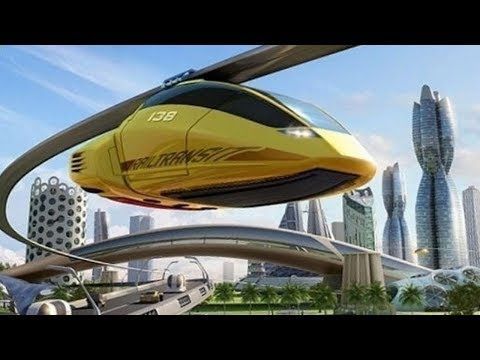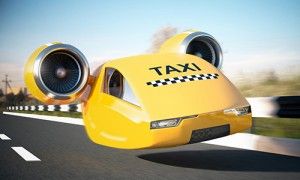
Five types of transport that will appear in cities in the future
In the not-so-distant future, cities are set to witness a transformative revolution in transportation. Advancements in technology, coupled with the urgent need for sustainable and efficient modes of transport, are giving rise to five innovative types of transportation that will reshape urban mobility. Let's take a closer look at these exciting developments.
Autonomous Vehicles: Picture a city where cars navigate the streets without drivers, using artificial intelligence and sensors to make decisions and avoid collisions. Autonomous vehicles are poised to become a common sight in the cities of the future. These self-driving cars will not only enhance safety but also optimize traffic flow, reducing congestion and travel times.
Hyperloop: Imagine traveling at supersonic speeds through a vacuum-sealed tube. The Hyperloop concept, pioneered by Elon Musk, promises just that. Using magnetic levitation and reduced air resistance, Hyperloop pods could propel commuters between cities faster than traditional modes of transport, revolutionizing long-distance travel and connecting urban centers like never before.
Flying Taxis: The skies above cities are set to become a bustling network of flying taxis. Vertical takeoff and landing (VTOL) aircraft, commonly known as flying cars or air taxis, will allow commuters to soar above traffic congestion. With electric propulsion systems and autonomous capabilities, these aerial vehicles will provide swift, efficient, and environmentally friendly transportation options.
Electric Scooters and Bicycles: In the quest for sustainable urban transport, electric scooters and bicycles are gaining popularity. These two-wheeled wonders are equipped with electric motors that assist riders, making it easier to navigate through city streets. With increased access and dedicated infrastructure, electric scooters and bicycles will become indispensable modes of transport, reducing carbon emissions and improving air quality.
Hyperloop One: A variation of the Hyperloop concept, Hyperloop One envisions a network of underground tunnels where pods travel at high speeds. By eliminating surface-level congestion, this subterranean system offers an efficient and eco-friendly transportation solution. Hyperloop One has the potential to revolutionize intra-city travel, connecting neighborhoods and easing traffic congestion.
As cities embrace these futuristic modes of transportation, they will experience profound changes in urban planning, infrastructure, and mobility patterns. Governments, urban planners, and policymakers must work together to integrate these innovations seamlessly into city landscapes, ensuring equitable access and sustainable development.
While these transport technologies hold tremendous promise, there are challenges to overcome. Safety, regulatory frameworks, public acceptance, and infrastructure requirements are just a few of the hurdles that must be addressed. Nevertheless, the potential benefits of these advancements far outweigh the challenges, offering cities a chance to reimagine transportation and create more livable and connected urban environments.
In conclusion, the future of urban transportation holds great excitement and promise. Autonomous vehicles, Hyperloop systems, flying taxis, electric scooters and bicycles, and Hyperloop One are poised to revolutionize the way we move within cities. These innovative transport solutions will not only improve efficiency and convenience but also contribute to a more sustainable and connected urban future.
As cities embrace these changes, the possibilities for improved mobility and quality of life are endless.


